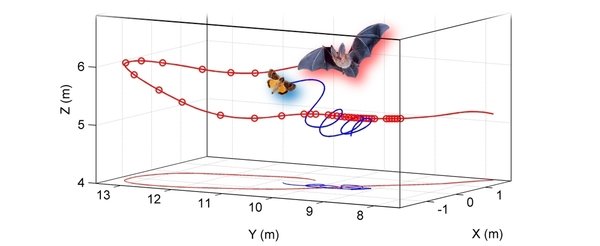
Dynamics of biosonar
When pursuing insects, bat echolocation has to be highly dynamic since both prey and predator constantly change relative positions during flight. Additionally, eared moths perform erratic evasive manoeuvres when under attack, thereby adding a fast, unpredictable component that significantly decreases the capture success of bats. Foraging bats therefore have to constantly adapt call emission and perception in a highly dynamic way.
We use different experimental approaches both in the field and lab to study the behavioural strategies, which bats employ for emitting, receiving and processing the returning echoes of complex and variable auditory scenes. We ask which sensory mechanisms in emission and perception enable bats to succesfully capture erratically moving prey, and we will combine these results with our study of moth behaviour. We thus aim to understand the function, adaptive value and evolution of both predator and prey strategies, which coevolved in the arms race between insectivorous bats and their insect prey.